3D printing is an exciting way for kids to explore their creativity, learn new skills, and understand technology. Introducing children to DIY 3D printing projects can spark their interest in science and engineering while being a fun and engaging hobby. From simple toys to more complex educational tools, there are endless possibilities that can keep young minds busy and challenged.
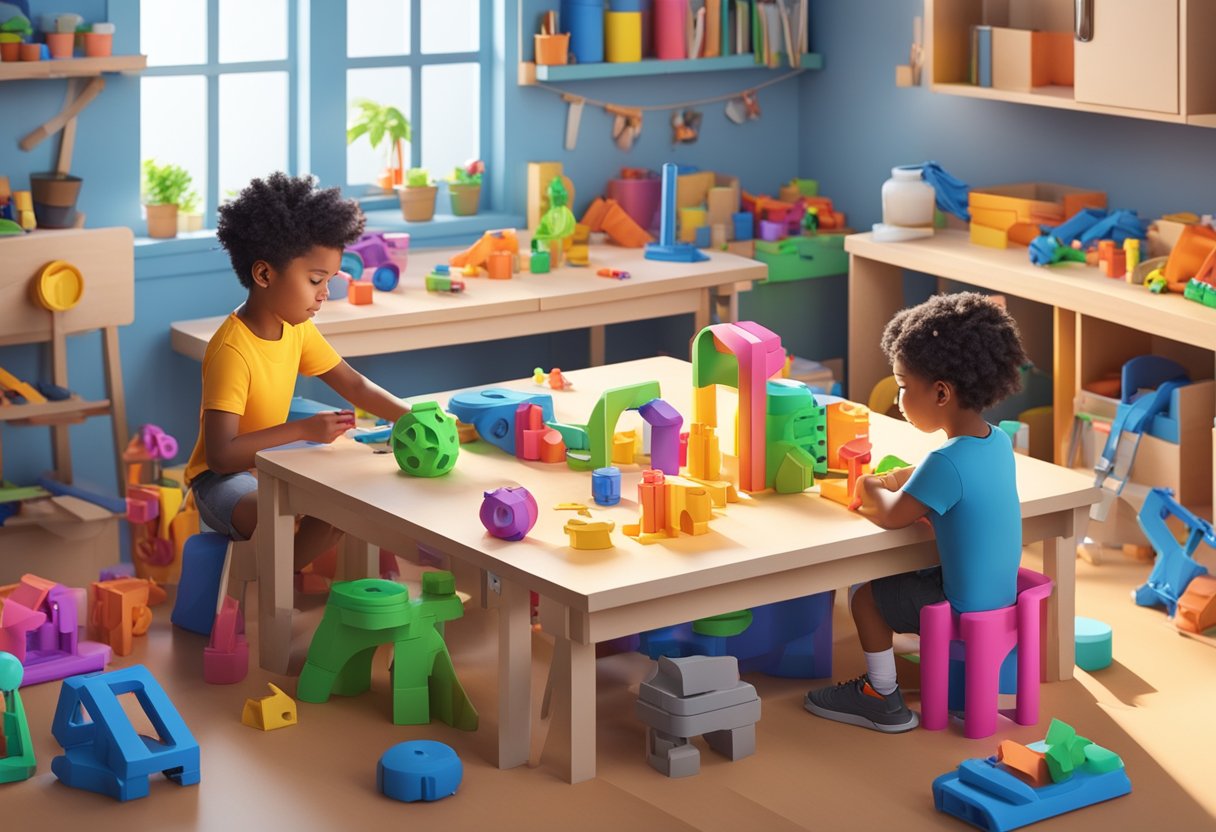
For parents and educators, 3D printing offers a unique opportunity to combine play and learning. Projects can range from designing a quirky new toy like a spinning top or yo-yo to creating useful items like a bag clip or a self-mounting soap dish. Different projects suit various skill levels, making 3D printing accessible for beginners and more advanced young creators alike.
Not only does 3D printing provide hands-on experience with technology, but it also helps children develop problem-solving skills and boosts their confidence in learning. By sharing their creations with friends or online communities, kids can take pride in their work and inspire others to join the fun.
Key Takeaways
- Kids can learn about science and engineering through 3D printing.
- Projects range from simple toys to useful gadgets, suitable for all skill levels.
- 3D printing fosters creativity and problem-solving skills in children.
Understanding 3D Printing
3D printing has become a popular technology for creating three-dimensional objects from digital models. It's a powerful tool in education, allowing kids to explore creativity and engineering concepts.
Basics of 3D Printing
3D printing, also known as additive manufacturing, builds objects layer by layer from materials like plastic. The process starts with designing a digital model using software. This model is then sliced into thin layers.
The 3D printer reads the sliced file and begins printing each layer. Think of it as a robotic hot glue gun that moves in three directions: up-and-down, side-to-side, and forward-and-back. Materials like PLA (Polylactic Acid) are common for kids because they are safer and eco-friendly.
Some objects take minutes to print, while others can take hours. The printer needs to be calibrated correctly to ensure the layers stick together without errors. More details on 3D printing basics.
Choosing the Right 3D Printer for Kids
Selecting a 3D printer for kids requires considering safety, ease of use, and features. Kid-friendly 3D printers often have enclosed printing areas to keep small hands safe from hot parts. They also come with simple software and user-friendly interfaces.
Important features include:
- Safety features: Enclosures, low-temperature printing.
- Materials compatibility: Printers that use non-toxic materials like PLA.
- Ease of use: Touchscreen controls and preloaded models for quick starts.
Additionally, smaller build volumes are suitable for kids' projects, while WiFi connectivity can make file transfers easier. Some popular models for children can be found here.
Getting Started with Your First Print
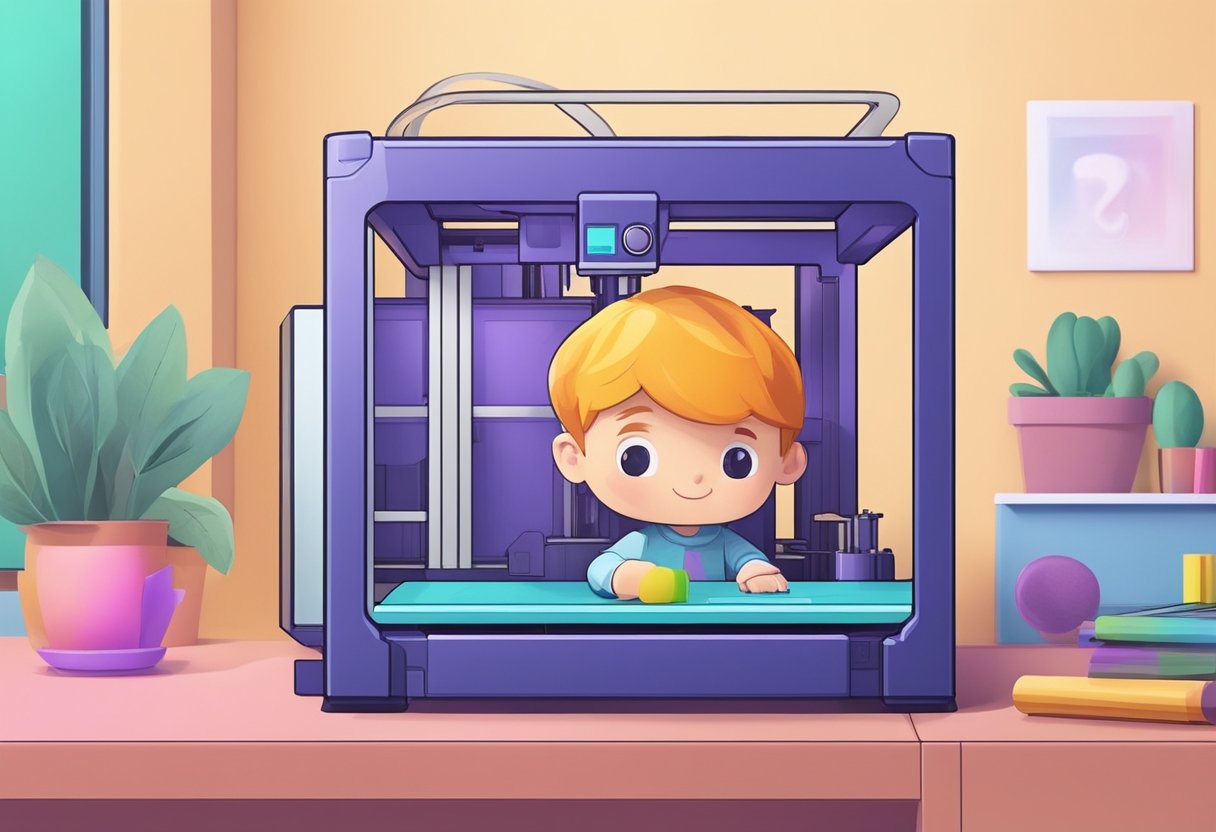
To begin your 3D printing journey, there are a few essential steps to follow, including setting up the printer, learning to use printing software, and handling filament correctly. These elements ensure a smooth start and enhance the learning experience for kids.
Setting Up the 3D Printer
Unpacking and Placement
Start by unpacking the 3D printer carefully. Place it on a stable, flat surface to avoid vibrations. Ensure the area is well-ventilated.
Calibration
Calibrate the printer by following the manufacturer’s instructions. Proper calibration ensures accurate prints. Level the build plate and check that the print head is positioned correctly.
Connection
Connect the printer to your computer using the provided USB cable. Some printers also support Wi-Fi or SD card connections. Check the manual for specifics.
Introduction to 3D Printing Software
Cura and Other Options
Cura is a popular and user-friendly software for 3D printing. Download and install Cura or another software recommended by your printer’s manufacturer.
Adjusting Settings
Open the software and import a 3D model file, typically in STL format. Adjust settings such as layer height, print speed, and temperature based on the material and model.
Simulation and Slicing
Use the software to preview the print by simulating each layer. This helps catch potential issues. Once satisfied, "slice" the model to generate G-code, the instructions the printer will follow.
Selecting and Handling Filament
Choosing Filament
Common filaments for kids’ projects include PLA and ABS. PLA is recommended for beginners due to its ease of use and safety. ABS is stronger but requires more precise settings and ventilation.
| Filament Type | Characteristics | Best For |
|---|---|---|
| PLA | Easy to use, safe | Toys, crafts, educational |
| ABS | Strong, durable | Functional parts, gadgets |
Preparation
Store filament in a dry place to prevent moisture absorption. Moist filament can cause printing issues.
Loading Filament
Load the filament into the printer’s extruder following the manufacturer’s instructions. Heat the nozzle to the recommended temperature for the filament type. Feed the filament until it extrudes cleanly from the nozzle, indicating it is ready to print.
Safety and Preparation
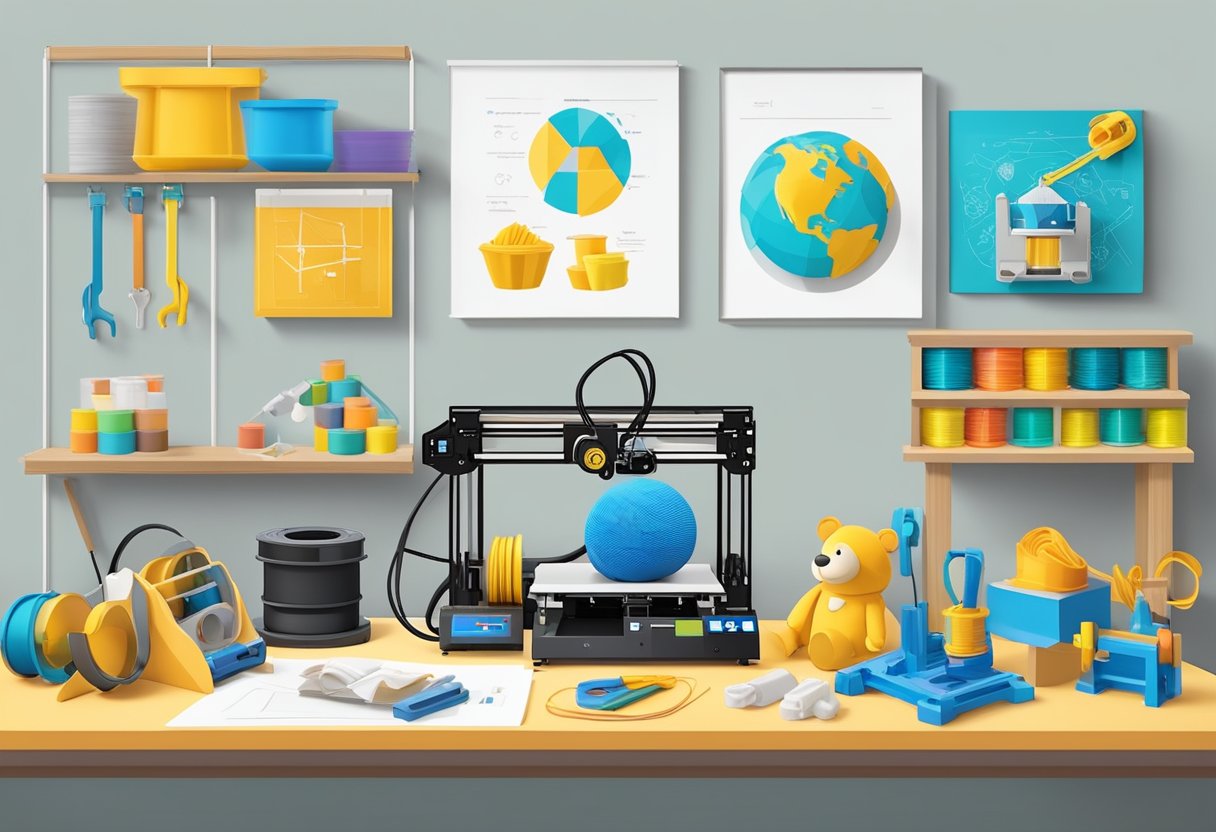
Ensuring children have a safe and enjoyable experience while 3D printing requires attention to various safety measures. These guidelines are crucial to prevent accidents and make the most of the 3D printing process.
Understanding Safety Precautions
When using a 3D printer, it's important to establish clear safety rules. No food, drinks, or gum should be near the printer. Inspect the printer before each use to ensure there are no issues.
Children should always have adult supervision. It's essential to teach them not to touch the printer when it’s in operation, as it can become very hot. Ensure they wear safety glasses to protect their eyes from any debris or fumes.
Proper ventilation in the printing area is critical. Fumes from melted plastic can be harmful, so the workspace should be well-ventilated. Use a fume hood or ensure windows are open.
Setting up a designated printing area can help keep the rest of the space free from hazards. Children should understand the importance of keeping the area organized and clean. This makes it easier to spot potential issues and reduces the risk of accidents.
Simple and Fun 3D Printing Projects
Kids can explore their creativity and gain hands-on experience with technology through 3D printing. The following projects are perfect for beginners, offering a mix of imaginative fun and practical use that will keep young minds engaged.
Creating Toy Figurines
Toy figurines are a fantastic way for kids to get started with 3D printing. They can create animal figurines, action figures, or even customized 3D printed toys based on their favorite characters.
Using simple 3D models available online, they can print small animals like dinosaurs, cats, or dogs. This project helps kids develop their imagination and offers a tangible result they can play with right away.
Additionally, kids can paint the printed figurines, adding a layer of creativity to the project. For specific ideas, check out these 3D printing projects for beginners.
Designing Custom Jewelry
Designing custom jewelry offers a unique way for kids to combine creativity with practical skills. They can create personalized pieces like rings, necklaces, or bracelets using simple 3D models.
Kids can experiment with different shapes and sizes, creating unique designs tailored to their preferences. This project not only allows for artistic expression but also teaches valuable skills in design and 3D modeling.
There are many online resources and templates available to help get started. You can find a range of ideas and inspiration in the 50 cool things to 3D print guide.
Making Practical Items for Everyday Use
Printing practical items is a great way for kids to see the real-world applications of 3D printing. They can create useful objects like a pencil holder, a bag clip, or even planters.
These items can be used daily, demonstrating the value and functionality of 3D printing technology. For example, a cable organizer can help manage charging cables and keep a workspace tidy.
Fidget spinners, which are simple and quick to print, are another excellent project idea. These items not only serve a practical purpose but also provide a fun and interactive way to engage with 3D printing.
Educational Aspects of 3D Printing
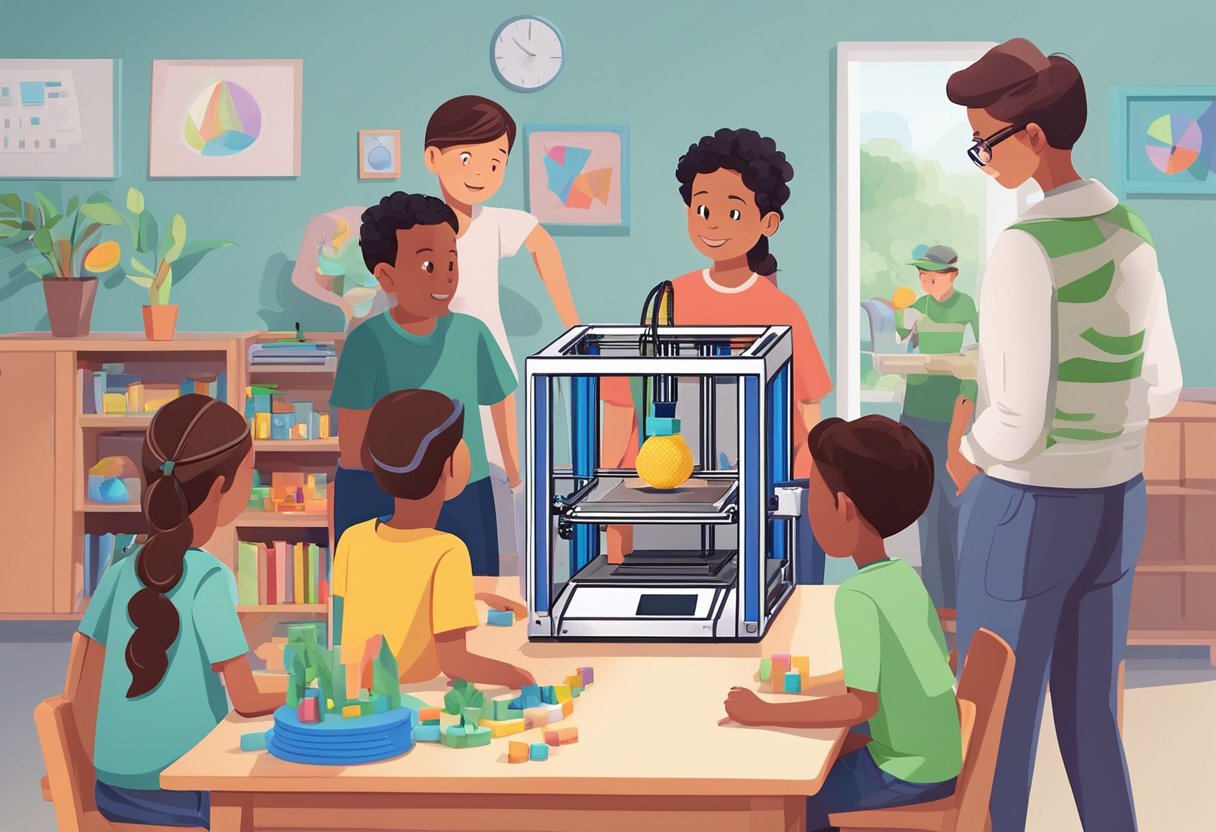
3D printing offers exciting opportunities for education by integrating hands-on learning with STEM disciplines and helping students develop vital critical thinking and problem-solving skills.
Incorporating 3D Printing in STEM Education
3D printers are valuable tools for teaching STEM subjects. In science classes, students can create models of cells, organs, and even entire ecosystems. This makes abstract concepts more tangible.
In technology and engineering lessons, students learn how to design objects using CAD software. They experience the entire engineering process from concept to prototype. Math lessons benefit from 3D printing through visualization of geometric shapes and understanding spatial relationships.
Teachers can use 3D printers to create interactive and engaging activities. For instance, students can design and print simple machines to study forces and motion. This hands-on approach makes learning more practical and memorable.
Developing Critical Thinking and Problem-Solving Skills
3D printing encourages students to think critically and solve problems. When designing a printable object, they must identify constraints, brainstorm solutions, and test their ideas.
The process of troubleshooting a print that didn't work as expected is a rich learning experience. Students analyze why the print failed—was it a design flaw or a printer error? They then adjust their designs or settings, fostering resilience and persistence.
Additionally, 3D printing projects often involve collaboration. Students discuss ideas, offer feedback, and work together to find the best solutions. This group work builds both communication skills and collaborative problem-solving abilities.
Through these activities, students cultivate critical thinking as they evaluate different solutions and make decisions based on their findings. This process mirrors real-world problem-solving and prepares them for future challenges.
Advanced Projects to Challenge Young Minds
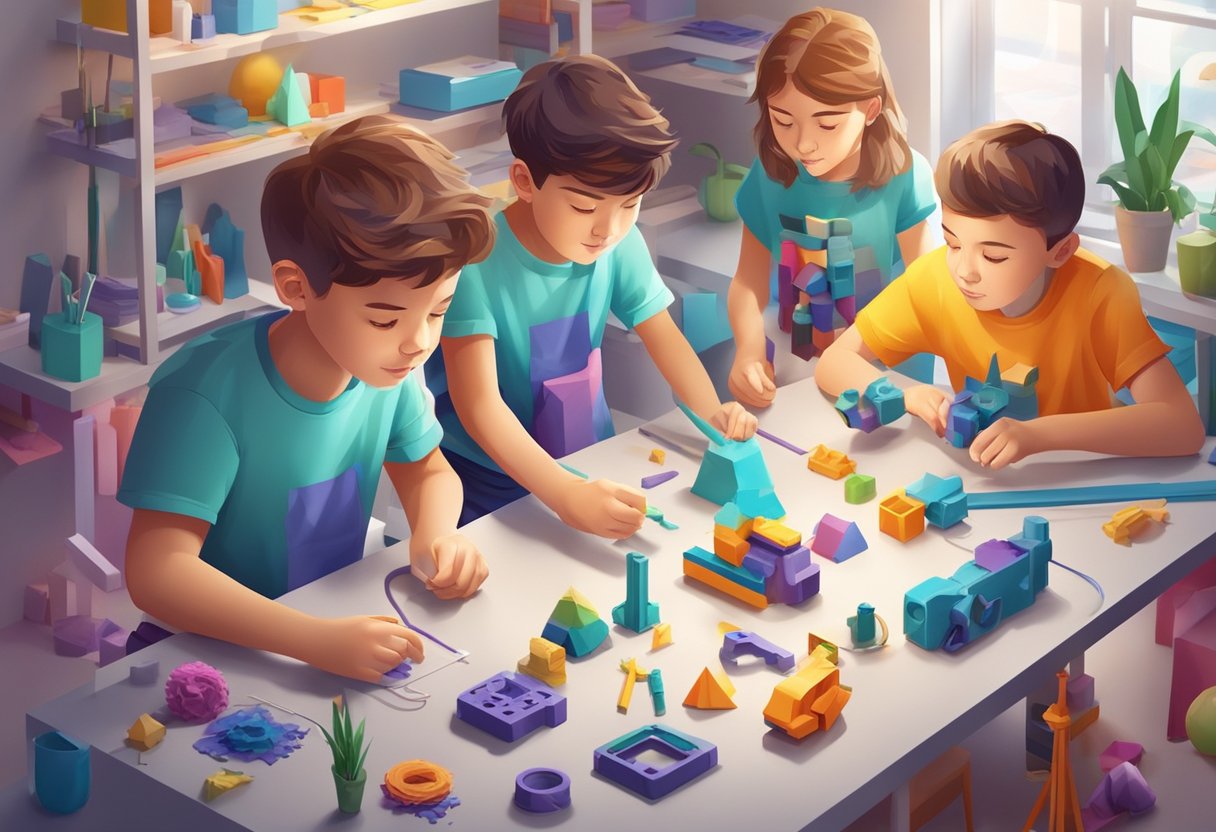
These advanced 3D printing projects require a deeper understanding of 3D modeling and offer more complex challenges. By engaging in these activities, children can build functional gadgets and explore their artistic and musical talents.
Building Functional Gadgets
Creating functional gadgets can be a rewarding challenge. Kids can start with useful items like phone cases or a headphone holder. These projects introduce them to the mechanics of design and practicality.
For those interested in electronics, a mini Raspberry Pi notebook can combine 3D printing with programming. Building things like earbud cases or a decorative lamp teaches precision and patience. These projects help children grasp the intricacies of 3D modeling software like Tinkercad.
They can also venture into practical home items like a doorstop or drink coasters. Creating dice or spinning tops can turn functional designs into fun games. By building these gadgets, children can also explore potential small business ideas.
Exploring Art and Music through 3D Printing
Exploring art and music through 3D printing allows kids to combine creativity with technical skills. They can create musical instruments like small flutes or simple percussive instruments.
Designing aesthetically pleasing objects, such as miniatures or action figures, can enhance their artistic abilities. Projects like a chessbot monster or intricate board games can blend art and strategy.
Kids can also dive into tactile designs like Braille items to help visualize their ideas. Creating gifts like personalized fidget cubes combines both art and functionality. These projects help in understanding not just design but also nuances in texture, form, and usability.
Resources and Community
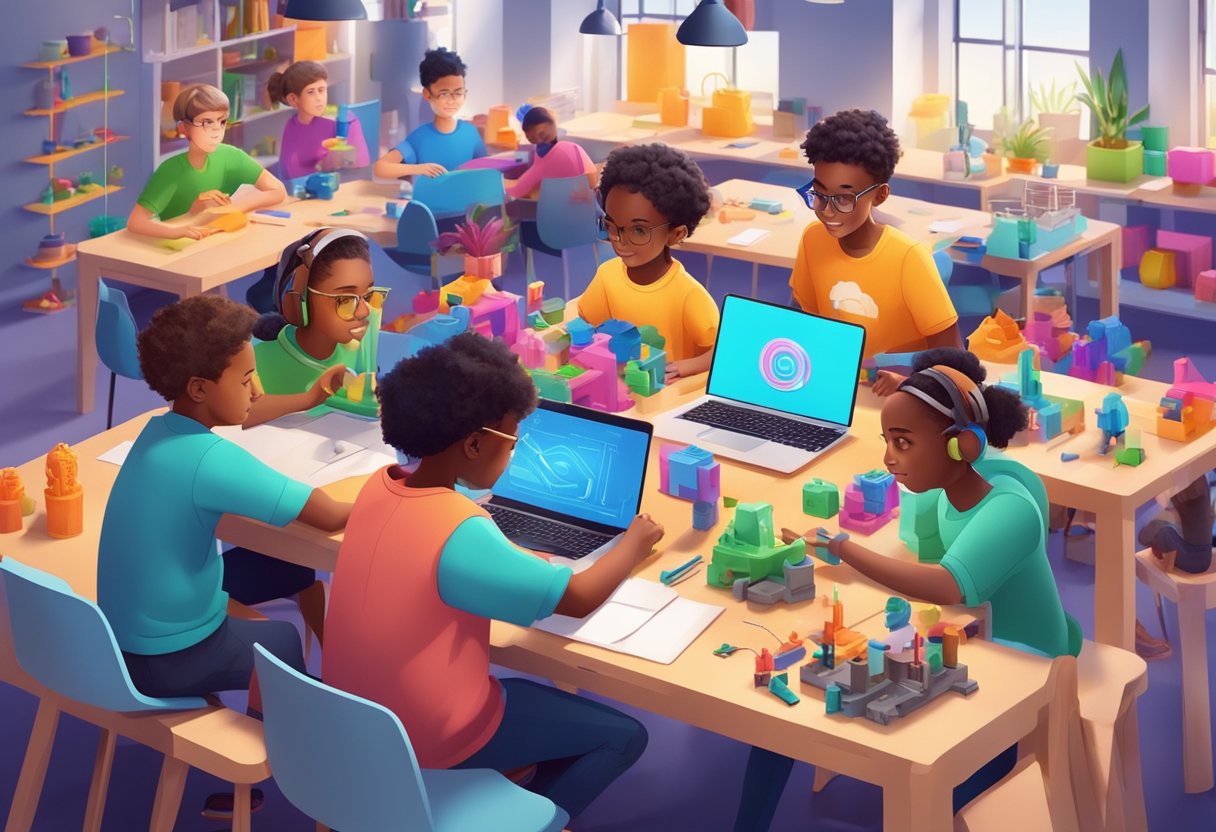
Accessing free 3D models and connecting with the maker community can enhance kids' DIY projects. These resources provide artistic inspiration and practical help.
Finding Free Resources and 3D Models Online
There are many websites where kids can find free, downloadable 3D models. Sites like Thingiverse offer a variety of designs, from functional items to fun toys. Students can print models like Cali Cat or stegosaurus puzzles.
Online communities provide additional resources. Websites such as All3DP list kid-friendly project ideas. They feature step-by-step guides to help beginners print awesome designs. Printable items might include simple toys or intricate parts for arts-based projects.
Downloading these models is usually simple. It allows kids to start printing immediately without designing from scratch.
Connecting with the Maker Community
Joining online maker communities can be highly beneficial. Platforms like Teach Your Kids Code and STEMTropolis provide forums and discussion boards.
Kids can share their projects and ask for advice. This encourages collaboration and learning from others' experiences. Supportive environments like these help students improve their skills. Connecting with enthusiasts who share similar interests, such as creating Star Wars toys, can be motivating.
Networking with peers and experts in 3D printing ensures continuous growth and discovery in the field. They foster a sense of community, helping young makers feel supported in their creative endeavors.











Member discussion